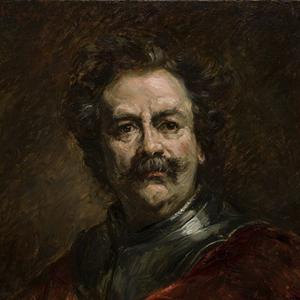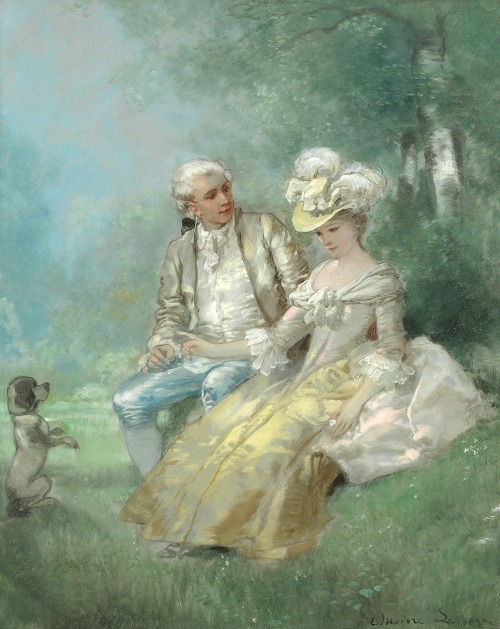

Théodore Lévigne
Théodore Levigne was a French painter, born on November 17, 1848 in Noirétable and died on November 11, 1912. His family moved to the Saint-Jean district of Lyon in 1856. He attended the École nationale supérieure des beaux-arts de Lyon from 1860 to 1862. At the age of 19, he drew and painted one hundred and twelve life-size saints.
In 1854, Théodore was 6 years old and already fascinated by stained-glass paintings. It was with this in mind that he reproduced some of the stained-glass windows in the church at Noirétable. Two years later, the Levigne family moved to Lyon's Saint-Jean district. Jean Levigne ran a bootmaker's store and later specialized in making church shoes. Théodore did his best to attend the local elementary school, but his artistic intelligence struggled to find its way onto paper: he was a dreamer. At the beginning of 1857, with a third son joining the family, the parents decided to send Théodore to Jean-Pierre Laÿs, a renowned floral painter, who taught him the basics of drawing. In 1858, aged just 10, he was encouraged to apply to the Ecole Impériale des Beaux-Arts, then located in the Palais Saint-Pierre (it moved to rue Neyret in Lyon in 1920).
Five years later, the young artist won first prize for painting in Lyon with his work Un portrait; he was even praised by the director of the fine arts school, Théodore Caruelle d'Aligny, who declared: "The history of art offers no precedent for such distinguished work relative to the age of the young artist, who was barely 15".
In 1864, his brothers Prosper and Léon served as models disguised as "loves" in Jeu d'enfants. The same year, he began working on etching with Jean-Baptiste Danguin. The city of Lyon offers him a grant of 1,500 francs to continue learning his craft. But his travel plans were delayed by the death of his father on November 3, 1864.
In 1865, Théodore Levigne exhibited at the Grand Palais in Paris, where he lived at 18 rue Mabillon in the 6th arrondissement. However, the young artist failed to live up to the expectations pinned on him, and dropped out of Alexandre Cabanel and Jean-Léon Gérôme's classes. As a result, he was deprived of the pension he had been living on. He returned to Lyon to live with M. Delbeau, at 5 rue Pizay, and ended up regretting his attitude.
In 1867, he received a letter from the Préfet, announcing that in view of the testimonies he had received concerning his repentance and his new good intentions for the future, he would once again be entitled to the pension of 1,500 francs allocated the previous year. He returned to Paris, this time determined to work. That same year, aged just 19, Théodore accepted a commission to decorate the Jesuit chapel in Avignon. In three months, he drew and painted 112 life-size saints.
With the money he had earned, he left for Marseille and saw the sea for the first time. He embarked for Italy; the details of his journey are unknown. We do know, however, that he spent several months in Messina, Sicily, where he studied fresco technique and perfected the art of painting draperies and silks. To support himself, he sold his drawings and studies. He then returned to France.
War broke out on August 2, 1870. An injury forced him to stay in bed for a fortnight. He returned to Lyon to see his mother, and volunteered for the 1st Rhone Legion. During the campaign, he drew everything in sight. At Chateauneuf, he sketched the Prussian battery firing on the legionnaires.
